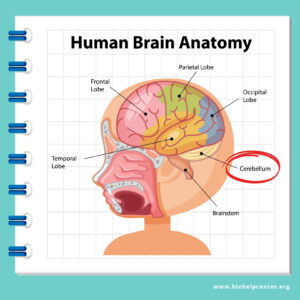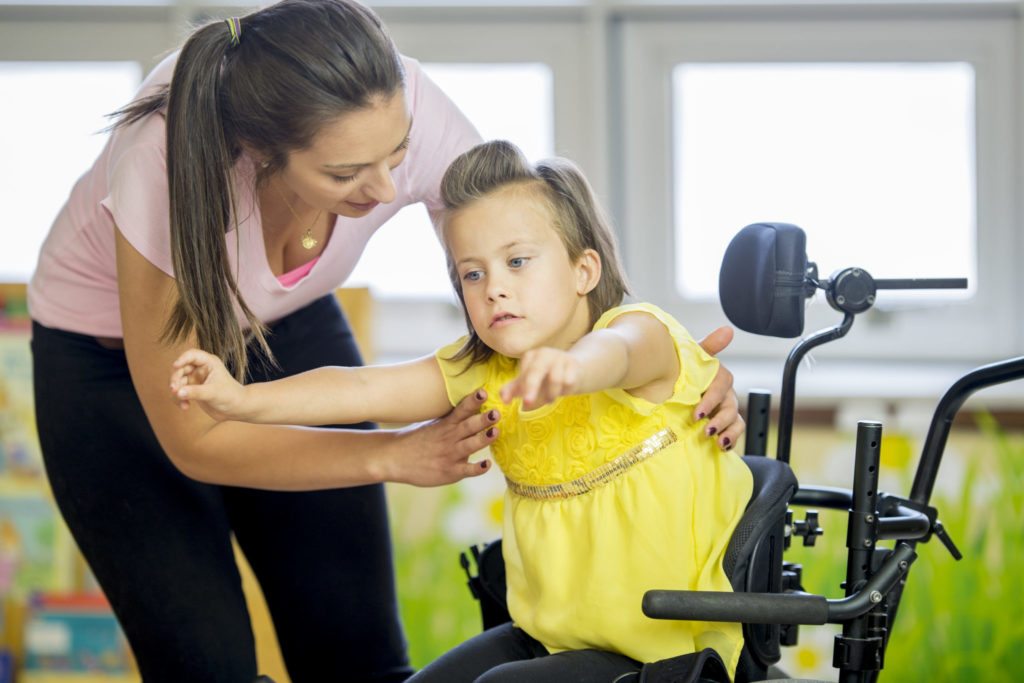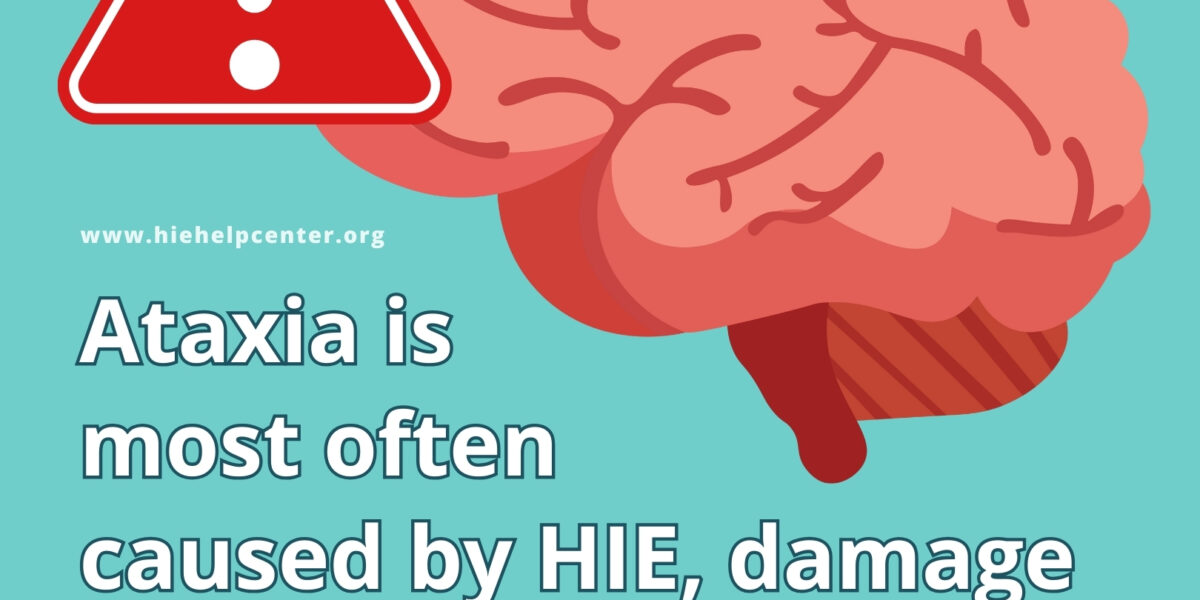 Ataxia is defined as a lack of muscle control or coordination of voluntary body movements. It usually presents itself as a lack of control in the arms and legs, difficulty walking, difficulty with fine motor skills, or difficulty with speech (1).
Ataxia is defined as a lack of muscle control or coordination of voluntary body movements. It usually presents itself as a lack of control in the arms and legs, difficulty walking, difficulty with fine motor skills, or difficulty with speech (1).
It is most often caused by a loss of nerve cells, hypoxic ischemic-encephalopathy (HIE), or damage in the cerebellum (the part of the brain that controls muscle coordination). As many as 150,000 people in the U.S. are affected by ataxia (2).
What causes ataxia?
Many underlying conditions can cause ataxia, including (1):
 Head trauma
Head trauma- Hypoxic-ischemic encephalopathy (HIE) or another oxygen-depriving birth injury
- Stroke
- Cerebral palsy
- Certain medications
- Multiple sclerosis
- Celiac disease
- Sarcoidosis
- Paraneoplastic syndromes
- Toxic reaction
- Metabolic disorder
Hereditary ataxia
Ataxia can also be hereditary, resulting from a defect in a certain gene that makes abnormal proteins (1). These proteins may cause nerve cells in the cerebellum to degenerate. These gene defects can result in ataxia that is progressive (gets worse over time). The types of hereditary ataxia include (1):
- Spinocerebellar ataxias
- Episodic ataxia
- Ataxia-telangiectasia
- Wilson’s disease
- Congenital cerebellar ataxia
- Friedrich’s ataxia
Signs and symptoms
Ataxia can be characterized by the following symptoms (1, 2):
- Difficulty swallowing
- Unsteady gait
- Poor muscle coordination or body movements
- Noticeable change in speech
- Fine motor difficulties
- Involuntary eye movements
- Loss of balance
- Tremors
- Heart problems
If you don’t know what’s causing your or your family member’s symptoms, they should be reported to your doctor immediately in order to evaluate their cause (1). If the damage or swelling of the cerebellum is acute and related to hemorrhage, edema, or another cause, it can happen very quickly. Ataxia that comes on suddenly is a medical emergency.
Ataxia and the cerebellum
 Because ataxia is most often caused by a loss of nerve cells, HIE, or damage in the cerebellum, it’s helpful to know what the cerebellum does. The cerebellum is the area in the bottom and back (behind the brainstem) of the brain that controls balance and coordination. It serves the following functions (3):
Because ataxia is most often caused by a loss of nerve cells, HIE, or damage in the cerebellum, it’s helpful to know what the cerebellum does. The cerebellum is the area in the bottom and back (behind the brainstem) of the brain that controls balance and coordination. It serves the following functions (3):
- Coordinating and timing movements
- Learning and acquiring new movements (i.e., riding a bike)
- Coordinating eye movements
- Maintaining balance
The cerebellar hemispheres – right and left
The cerebellar hemispheres control the coordination of complex tasks as well as the planning of motor execution. The right hemisphere controls the movement of limbs on the left side of the body, and the left hemisphere controls the movement of limbs on the right (1). Thus, damage to the cerebellar hemispheres can cause limb ataxia on the limbs controlled by that side. Limb ataxia will present itself as difficulty with tasks completed by arms and legs. Damage to the area can also cause oral motor ataxia, which presents itself in the form of slurred, slow, irregular, or monotonous speech.
Diagnosis
Doctors diagnose ataxia using a physical and neurological exam. They also may perform a CT scan, an MRI, genetic testing, or lumbar puncture (1).
Treatments for ataxia
Individuals with ataxia may find speech therapy, physical therapy, occupational therapy, certain medications (especially in conjunction with these therapies), and/or the use of assistive technologies and adaptive devices helpful. The treatment plan should be based on the underlying cause(s) of the ataxia (1). In certain cases, the symptoms can be prevented or controlled. However, there is no cure for ataxia.
Ataxic cerebral palsy

Ataxic cerebral palsy is a subtype of cerebral palsy that brings about or is characterized by ataxic symptoms. It is relatively rare, and can often be confused with progressive or genetic degenerative disorders (4). A patient can undergo metabolic studies, neuroimaging, and clinical courses to evaluate whether they have ataxic cerebral palsy or general ataxia.
Signs and symptoms of ataxic cerebral palsy
Ataxic cerebral palsy is often characterized by the signs and symptoms of general ataxia. Some signs and symptoms may be more common in those with ataxic cerebral palsy, including (4):
- Slow, explosive, or jerky speech
- Delayed language skills and motor milestones
- Coordination issues and unsteady gait
About the HIE Help Center and ABC Law Centers
The HIE Help Center is run by ABC Law Centers, a medical malpractice firm exclusively handling cases involving cerebral palsy, HIE, and other birth injuries. Our lawyers have been advocating for children with disabilities since the firm’s inception in 1997.
If you suspect your child’s HIE may have been caused by medical negligence, please contact us today to learn more about pursuing a case. We provide free legal consultations, during which we will inform you of your legal options and answer any questions you have. Moreover, you would pay nothing throughout the entire legal process unless we obtain a favorable settlement.
You are also welcome to reach out to us with inquiries that are not related to malpractice. We cannot provide individualized medical advice, but we’re happy to track down informational resources for you.
Sources:
- Ataxia. (2018, March 8). Retrieved December 13, 2019, from https://www.mayoclinic.org/diseases-conditions/ataxia/symptoms-causes/syc-20355652.
- What is Ataxia? (n.d.). Retrieved December 13, 2019, from https://ataxia.org/what-is-ataxia/.
- Leopold, C. (2018, August 31). Cerebellum: Anatomy, function, and disorders. Retrieved from https://www.medicalnewstoday.com/articles/313265.php#function.
- Glader, L. Clinical features and classification of cerebral palsy. In: UpToDate. Armsby, C. (Ed), UpToDate, 2017.

